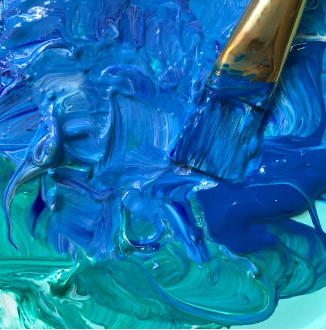תוֹכֶן הָעִניָנִים
High-Density Plastisol Ink for Textile Printing: Easy Guide
Meta Description: Learn how high-density plastisol ink High-density inks help make bright, strong designs on clothes. Discover tips, uses, and fixes for common problems.
1. What is High-Density Plastisol Ink?
High-density plastisol ink is a thick, PVC-based ink used to print designs on fabric.
Key Benefits
- עֲמִידוּת: Stays bright after washing.
- Stretch Resistance: Works on stretchy fabrics.
- אֲטִימוּת: Shows up on dark clothes.
Common Uses:
- Sportswear (team jerseys).
- Promotional items (hoodies, bags).
2. High-Density Plastisol vs. Other Inks
| סוג דיו | הטוב ביותר עבור | Drawbacks |
|---|---|---|
| פלסטיזול | Bold designs, dark fabrics | Not eco-friendly |
| על בסיס מים | Soft feel | Needs fabric pretreatment |
| פְּרִיקָה | Cotton fabrics | Fades over time |
| הַאֲצָלָה | בדים קלים | No texture is preferred when using high-density inks for a smooth finish. |
Choose plastisol for:
- 3D effects (Raised prints) can be achieved using puff additives in high-density ink formulations.
- Dark fabrics without pretreatment.

3. How to Use High-Density Plastisol Ink
3.1 Screen Setup
- Screen mesh count: לְהִשְׁתַמֵשׁ 110-160 רשת.
- Stencil: לִבחוֹר capillary film for sharp edges.
3.2 Ink Application
- Print: Add ink to the fabric.
- Flash: Dry with a flash dryer for 10 seconds.
- Print Again: Add more ink for raised texture.
3.3 Curing
- Temperature: Ensure it is consistent for the best results with high viscosity inks. 320°F for 60-90 seconds.
- Test: Stretch the fabric. If it cracks, cure longer.
4. Top 5 Uses of Plastisol Ink
- Sportswear: Durable logos (Nike, Adidas).
- Fashion: Glow-in-the-dark designs.
- Workwear: Labels that don’t scratch off.
- Promo Items: Bright prints on bags.
- ידידותי לסביבה: Phthalate-free plastisol (Green Galaxy).

5. Fixing Common Problems
| בְּעָיָה | פִּתָרוֹן |
|---|---|
| Pinholes can occur when using high-density inks in screen printing. | Use thicker ink or fix screen tension. |
| Cracking often happens when the emulsion is not properly cured during screen printing. | Cure fully at 320°F to ensure the emulsion adheres properly in screen printing. |
| הידבקות לקויה | Pre-treat polyester fabrics. |
6. Best Tools for Plastisol Printing
- דיו: Wilflex HD, Union Ultrasoft.
- מסכים: ספר or Murakami meshes.
- Dryers: Anatol conveyor dryers.
- ידידותי לסביבה: BASF Palatinol® plasticizers.
7. Future Trends
- Hybrid Printing: Mix plastisol with קורנית Digital printers can produce high-density images that are suitable for screen printing.
- Biodegradable Inks: Matsui’s eco-series.
- דיו חכם: Color-changing inks can add dimension to your designs when used in screen printing. thermochromic pigments.
8. שאלות נפוצות
האם דיו פלסטיזול עמיד למים?
Yes! It resists water after curing.
Can I print on nylon?
Yes, but pre-treat the fabric to ensure the emulsion adheres well in screen printing.
How to clean screens?
Use screen wash and a pressure washer to clean your screen printing supplies effectively.
9. מסקנה
High-density plastisol ink is great for strong, bright prints. Use eco-friendly plastisol and tools like וילפלקס אוֹ ספר for best results.




